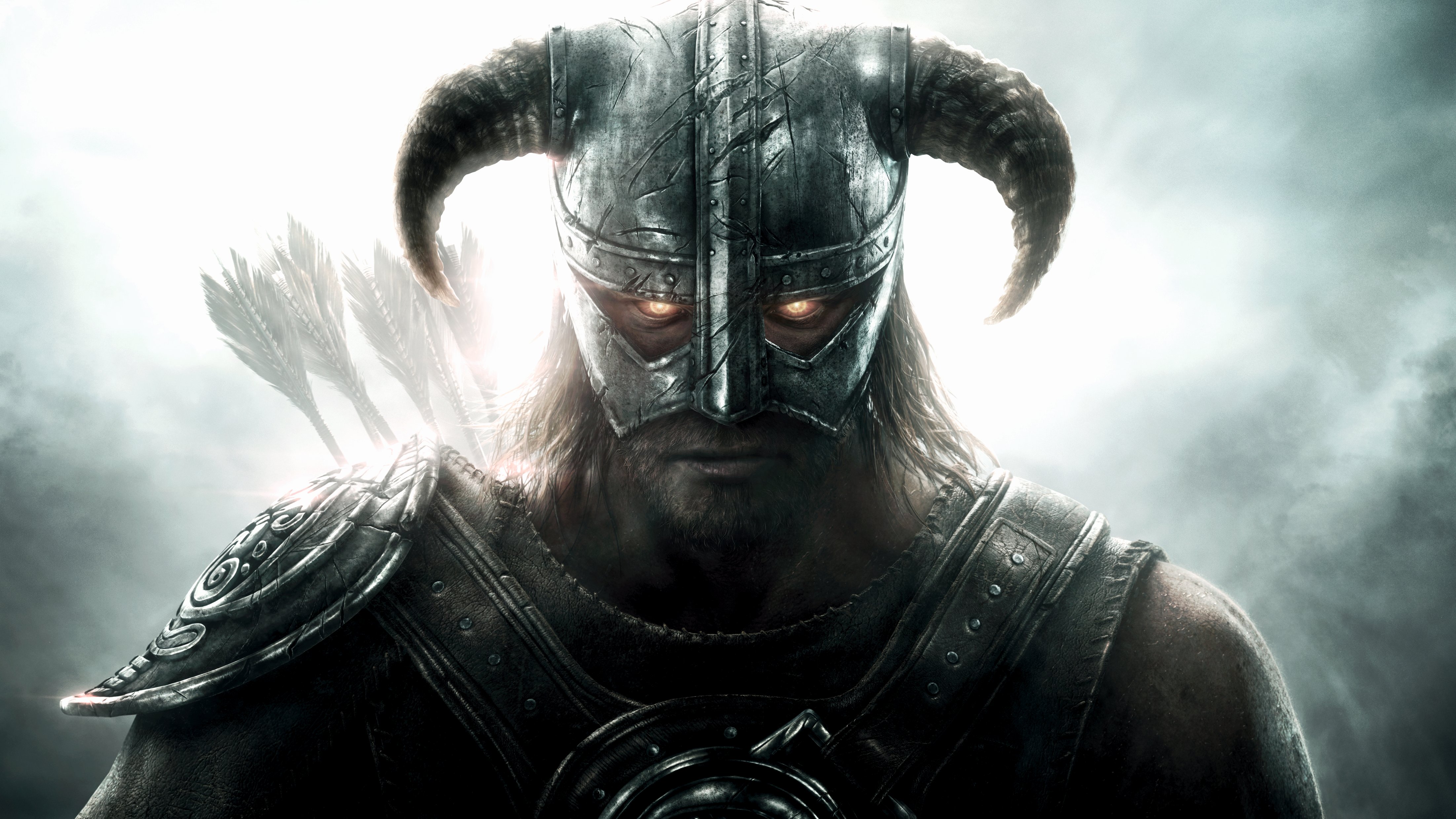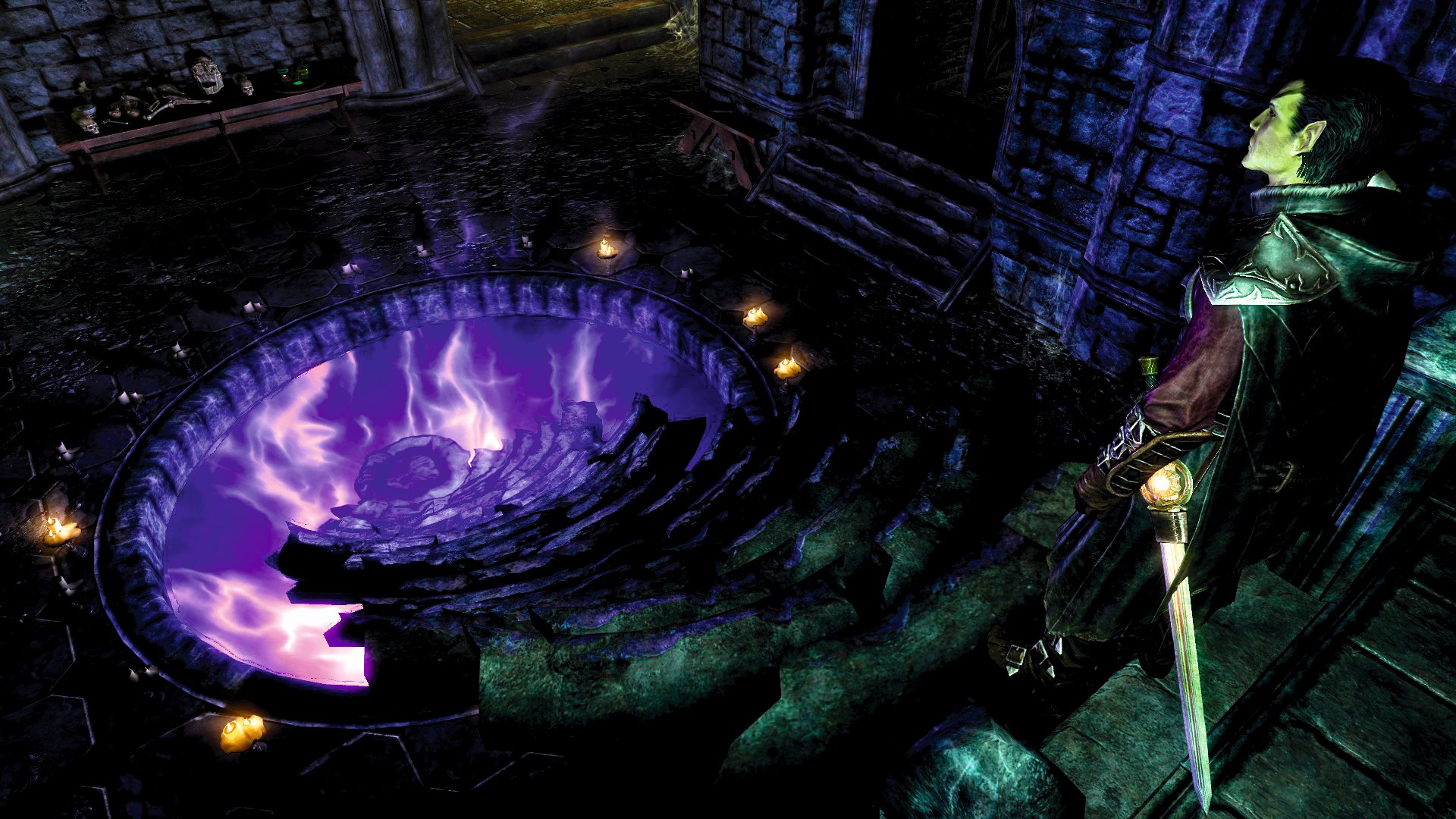Rediscovering Skyrim's greatness
Bethesda's 2011 RPG is still outstanding.


Reinstall invites you to join us in revisiting PC gaming days gone by. Today, Andy rediscovers Skyrim's greatness.
There’s a moment near the beginning of every Elder Scrolls game that defines the series. It’s when you emerge from the dreary dungeon, sewer, or wherever the prologue is set and see the world stretching out enticingly before you, brimming with possibility. I vividly remember this feeling when I first played skyrim five years ago.
After escaping execution thanks to a well-timed dragon attack, I found myself in a beautiful boreal forest, knowing that what I did next was entirely up to me. The game gently nudges you towards Riverwood, a nearby village that’s a good introduction for new players, but it’s really just a suggestion.
Replaying it today, a lot of that initial magic has been lost. But that’s only because, after hundreds of hours, I know where everything is. I know that if I head east I’ll find the town of Riften, with its snaking waterways and shady citizens. I know that if I go northeast I’ll travel the misty mountain passes of the Reach and arrive at the ancient city of Markarth. But, even so, I still feel a ripple of excitement. The sense of adventure, of shaping a new character’s destiny, is as exhilarating as it was back then.
Your character is dragonborn, a legendary hero. But until you trigger the chain of quests that reveals this, you’re whoever you want to be. Some people played Skyrim for hundreds of hours without ever setting the main story in motion. Personally, I prefer to play a sellsword, wandering from town to town, solving problems, helping people, killing people. The whole dragonborn thing is just too much responsibility.

The varied geography is what makes it one of the best open worlds on PC. Each region has a distinct atmosphere and personality. The Rift is gold and autumnal, with forests, lakes, and vineyards. An incongruously idyllic setting for the hotbed of crime and corruption that is Riften. Eastmarch is a volcanic, volatile landscape of bubbling hot springs and jagged rock. You can almost smell the sulphur in the air. To the far north, Winterhold is perpetually battered by blizzards and blanketed in thick snow. At night the sky is illuminated by vividly colourful aurora, a sight that never stops impressing. Whiterun is a vast, treeless tundra, freezing, grassy plains surrounding its central city.
At the centre of the map is the Throat of the World, a colossal mountain that you can’t help but feel the urge to climb when you first see it tickling the clouds. Your pilgrimage up it, and the view when you reach the peak, is one of the game’s best experiences. Just watch out for the frost troll lurking near the summit.
As is the case with a lot of RPGs, it’s the side quests where the best stuff lies. Joining the Dark Brotherhood and becoming a master assassin. Rising in the ranks of the Thieves Guild. Investigating a brutal murder in the city of Windhelm like some kind of fantasy gumshoe. Teaming up with a talking dog that’s actually a demon. Becoming a werewolf. Picking sides in a civil war. There are so many quests in Skyrim, from the epic to the absurd, and your journal is always fat with things to do. There isn’t much in the way of choice or branching paths, however, and far too many quests involve trekking through samey dungeons with a meagre reward at the end.
Keep up to date with the most important stories and the best deals, as picked by the PC Gamer team.
Whether it’s a Dwemer ruin, Draugur crypt, or Falmer hive, it becomes clear that all the dungeons in the game are snapped together from the same set of pieces. Play for any length of time and you’ll start to recognise props, room layouts, and puzzles. There are 197 clearable dungeons, camps, and other locations in the game, which explains this kitbash approach, but I’d rather have a smaller number of dungeons that feel more hand-crafted. To be fair, there are a few dungeons, particularly in the main questline, that boast some impressive, bespoke designs.

As I write this, almost 30,000 people are playing Skyrim on Steam. That’s remarkable for a five-year-old game, but not surprising. The vibrant modding scene frequently has me reinstalling, and some mods are basically essential for a replay. My favourite is Alternate Start: Live Another Life, created by Arthmoor, which lets you skip the opening sequence and choose from a number of different starting characters. You can play a bandit, a Stormcloak soldier, a diplomat from the Thalmor embassy, a peasant, a nobleman, and many more. It’s great for roleplaying, and an elegant way to avoid embracing your destiny.
Chesko’s brilliant Frostfall adds survival elements, so you have to dress appropriately or suffer from hypothermia. It adds craftable camping equipment, the ability to make a fire, and dozens of other features. Skyrim is the perfect example of how support for mods can dramatically extend the lifespan of a game. Even after the next Elder Scrolls is released, thousands of people will still be playing Skyrim.
The game is not without its flaws. As an RPG it’s fairly shallow, many of the quests are stiflingly linear, and the stealth is terrible – but the feeling of freedom it gives you is irresistible. The sheer scale of the thing, and the variety of quests, is enough of a distraction. And the world is so beautiful, sometimes I play just to go for a wander. Nothing beats the first time you leave that dingy cavern behind and see the world spread out before you, but even if you know the game inside out after hundreds of hours of play, there’s still something intoxicating about those first steps.
If it’s set in space, Andy will probably write about it. He loves sci-fi, adventure games, taking screenshots, Twin Peaks, weird sims, Alien: Isolation, and anything with a good story.


